Tours from Fes
Tours from Fes
The best itineraries
Unique Desert Tours personalizes several desert tours itineraries departing from Fes. Our plans can take us back to Fes, Marrakech, Casablanca, or any other location of your choosing.
Best Morocco landcapes
Morocco has stunning desert and city landscapes. As a result, during our city tours from Fes, we will make sure to stop at tourist attractions and must-see locations. For example, the Erg Chebbi sand dunes and the Ait Benhaddou Kasbah.
Money back guarantee
When you choose one of our city or desert tours from Fes, you have 30 days to cancel your reservation.
Pure local guides/drivers
We are Moroccan Berbers with experienced guides and drivers. As a result, during your Fes desert trips, you will be accompanied by an English/Spanish speaking driver and, if necessary, a guide.
Choose the perfect plan for you
We have created several tours itineraries from Fes, including desert excursions and city tours. However, if the plans do not meet your requirements, please fill out our contact form.
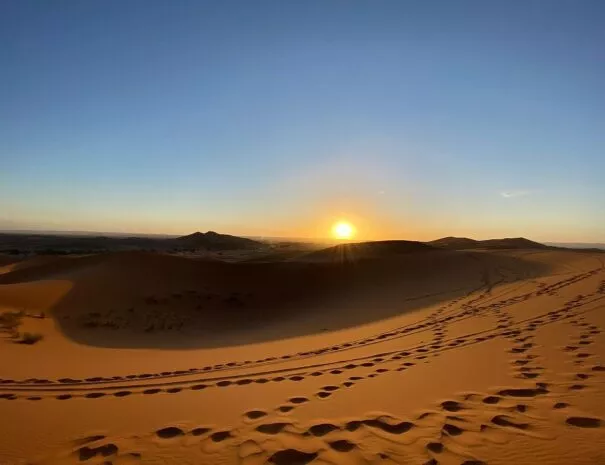
- 2 days tour from Marrakech to Zagora
- 2 days tour from Marrakech to Merzouga
- 2 days tour from Marrakech to Fes
- 3 days tour from Marrakech to Merzouga desert
- 3 days tour from Marrakech to Fes
- 4 days tour from Marrakech to Merzouga desert
- 4 days tour from Marrakech to Fes
- 5 days tour from Marrakech to Merzouga desert
- 5 days tour from Marrakech to Fes
- 6 days tour from Marrakech to Merzouga desert
- 7 days tour from Marrakech to Fes
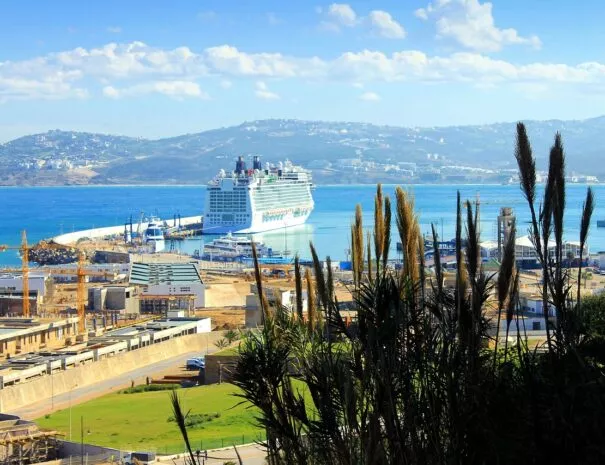
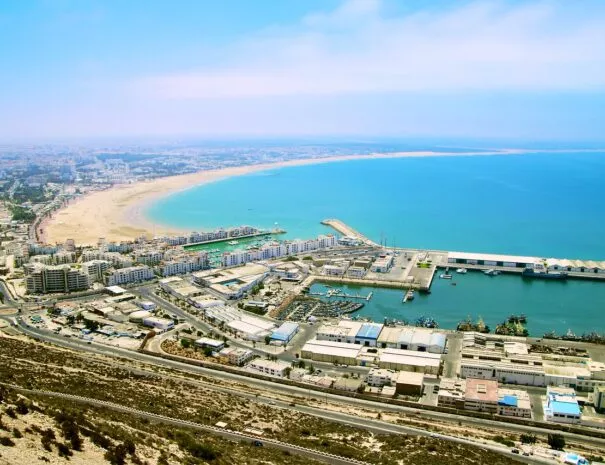
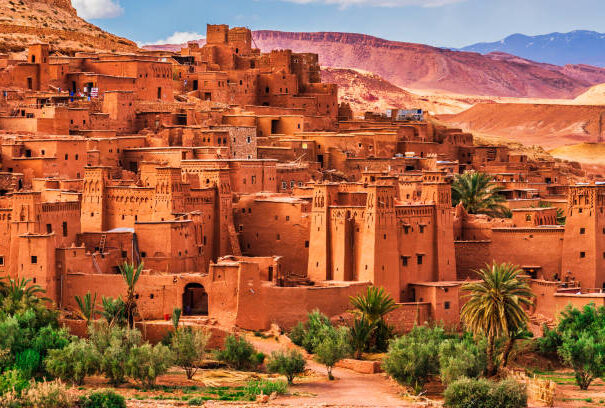
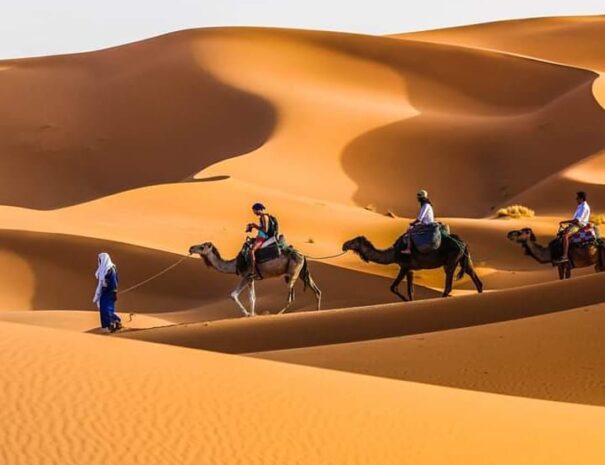
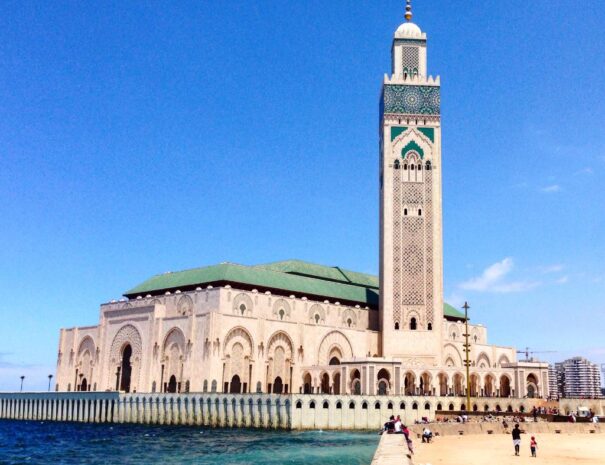
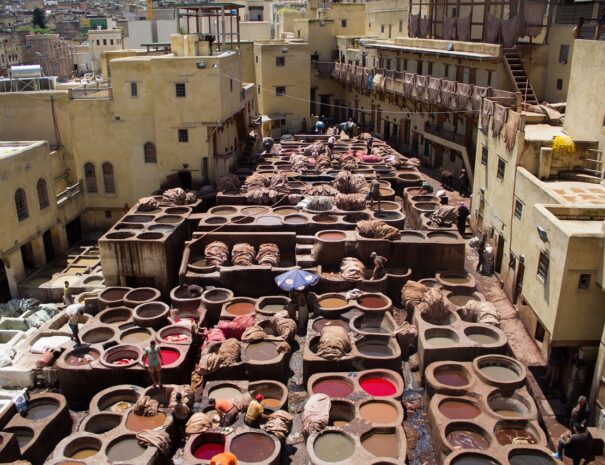
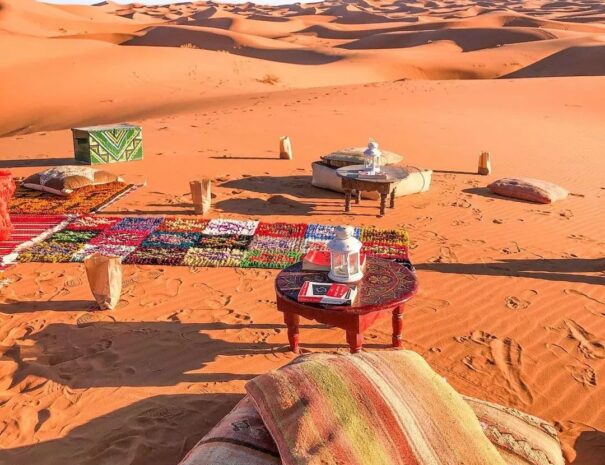
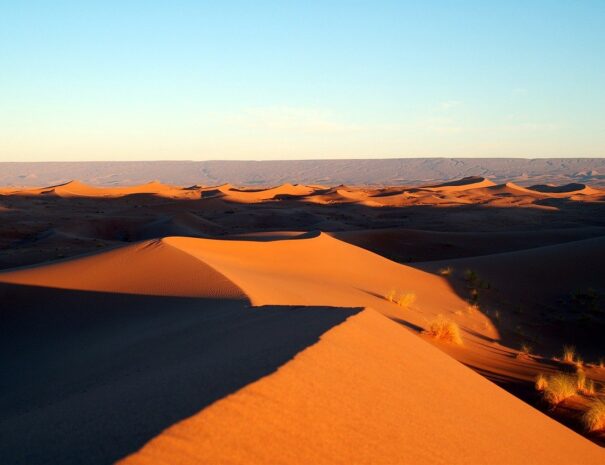
Desert tours from Fes sites
There is a lot to see and do on our tours from Fes. As a result, we include the finest sites to visit on our desert tours. It is usually preferable to have a thorough understanding of the locations or cities to which you are visiting.
Do you have any queries regarding our top travel destinations? Please do not hesitate to get in touch with us.
Ifrane, little Moroccan Switzerland
The city of Ifrane is the first stop on our tours from Fes. It is a Moroccan city in the province of Ifrane, close to the cities of Fez and Meknes. According to 2014 data, it has a population of 13,380 people. Furthermore, the city is one of the oldest Moroccan settlements situated on mountain peaks. It is situated at an elevation of 1,655 meters above sea level. As a result, it has a severe climate, and its mountains are frequently covered with snow throughout the winter seasons.
Original name
Near Ifrane, there are several caves. As a result, Ifrane is an Amazigh term that meaning “cave.” The city was also known as Orti, a name derived from Amazigh that means orchard or garden. While the city is currently referred to as “Small Switzerland,” Aside from the natural beauty. Not to mention its urban architecture, which is comparable to that of European towns.
History of Ifrane
During the sixteenth century AD, the residents lived in caverns and caves excavated in limestone in the rock of Wadi Tizkwit in the region of Ifrane and its environs. After that, the residents spent several years rebuilding their homes above ground. As a result, we discover many caverns beneath buildings that serve as animal shelters. Furthermore, storage facilities for personal items or, maybe, agricultural products and equipment.
By the mid-seventeenth century, A.D. The city had grown to the point that Sultan Al-Rashid bin Ali Al-Sharif granted it feudalism. They then put pastures at the disposal of tribal groups, while the tribes in the Ifrane-Azrou region were under French colonial rule, and the resistance was maintained until 1922 AD.
Tourism in Ifrane
Ifrane is regarded as one of the greatest locations to visit due to its pleasant weather. As a result, it became a park for many Moroccan families, whether from the same city or from hot regions such as Fez and Meknes. During the fall season, wild fishing enthusiasts may also be seen on the city’s outskirts. However, it is not just Moroccans who are affected, but also visitors from other countries. In the winter and fall, the city attracts a large number of international tourists who come to snowboard. Not to add that this activity has more than one winter stop, such as Michlifen Station, which features resorts and restaurants as well as a beginner’s ski service.
Most of the tours that start from Fes pass by Ifrane, especially when going to the desert.
Merzouga
Merzouga is famed for having Morocco’s tallest dunes, with its summits enjoying some of the finest dawn and sunset views in the country. As a result, it is the main feature you will see on our desert tours from Fes.
When leaving Rissani or Erfoud, your eyes will be drawn to the massive golden sand dunes of Erg Chebbi. It is also known as the Merzouga dunes, which dance across the horizon. It’s a lovely area full of amazing natural hues. The region is dominated by desert landscapes, with “Ergi” (clusters of sand – dunes) and “Hamads” (rocky dust) intertwined with dry rivers and oasis. Not to mention that the original nomadic population is now mostly established in tiny villages and cities around and nearby. Merzouga (the most developed), Hassi Labied, and Khamlia are the most well-known. Various tribes of Arabs, Berbers, and Gnaoua live in the region, producing a peaceful ethnic mosaic.
Location of Merzouga
Merzouga is a tiny Saharian town in south-eastern Morocco, around 50 kilometers from the Algerian border. Merzouga is located on the outskirts of the dunes of Erg Chebbi. Merzouga is also in the province of Errachidia, in the Draa-Tafilalet area. Merzouga is also 35 kilometers from Rissani, 45 kilometers from Erfoud, and 128 kilometers from Errachidia.
The road from Marrakesh to Merzouga is 560 kilometers long and travels through the highlands. As a result, the bus ride takes around 12 hours and might be exhausting. As a result, it is preferable to break the trip into two halves, with lodging in Ouarzazate (for visits to Ait Benhaddou and film studios), Boumal Dades, or Tinehrir (to admire the wonderful gorges and rock formations). Furthermore, Ouarzazate is 360 kilometers from Merzouga (about 5 hours drive). Not to add that the trip from Fez to Merzouga takes around 7 hours.
History of Merzouga
Merzouga itself has a relatively recent history, but the surrounding has been populated since ancient times. There are several old fortified settlements in the area. After winning the battle of Tafilalet in 1916-1932, French forces established Merzouga in the nineteenth century.
The story about a legend
There is a tale about the Erg Chebbi dunes that has been passed down through centuries that there was once a genuine rainforest here.
According to tradition, God himself turned this region into a desert because the locals refused to welcome and feed a poor and starving lady, while they themselves reclined in riches, mistook their hands for milk, and played with a handful of couscous.
The heavenly wrath came on these family, transforming the blooming jungle into a desert plagued by heat, a shortage of water, and sand storms.
Surprisingly, the 1,000-year-old epical art found in this location depicts creatures such as elephants and giraffes living in beautiful green settings.
Whatever your thoughts are on this mythology, the truth remains that the Erg Chebbi dunes are among the most magnificent sites on the planet.
Merzouga today
Because of its closeness to the beautiful dunes of Erg Chebbi, Merzouga is the primary tourist destination in this region of Morocco.
When a reinforced road to Merzouga was completed in the region in 2002, tourism began to grow rapidly. The hotel business has grown substantially in Merzouga, as well as adjacent Errachidia and Erfoud, despite the impacts of haphazard development.
Unsustainable dunes camping tourism has ended in over-exploitation of water resources and inability to comply with wastewater treatment regulations. The Moroccan government has taken the necessary actions to prevent future environmental harm, including ordering the removal of all whips from the dunes. Legal campgrounds can only be found at the bottom of the dunes; help sustainable tourism by refusing to tolerate unlawful camping in the middle of the dunes. Camps at dunes provide the same enthralling experience.
Merzouga contains Morocco’s biggest body of groundwater. Residents have been using them for decades owing to unique subterranean khetteras conduits.
Merzouga Sand is an ideal location for filming and was included in the 1962 film “Lawrence of Arabia,” starring Peter O’Toole and Omar Sharif. “Mumia” (1998) starred Brendan Fraser and Rachel Weish, and “Legionist” (1997) starred Jean Claude Van Dame. Scenes from one of James Bond’s films were shot in the neighboring Rissani landscape (“Specter”).
Festivals in Merzouga and nearby
- The Festival of Dates in Erfoud – held every October, it is a colorful display of Berberian culture where you can buy the freshest dates, date syrups, and other items.
Merzouga International Music Event – a spring music festival that brings together local and international musicians.
Rally 4L Trophy Rally – French Rally, renowned as the world’s largest rally for persons under the age of 28. It has attracted youthful enthusiasts of the classic, excellent Renault 4L for more than ten years (acceptable age 18-28 years). The rally will include almost 1000 vehicles! The rally, which takes place in late February and early March, lasts ten days and spans 6000 kilometers. - Afriquia Rally Rallye Merzouga – Rallye Merzouga The Merzouga Rally is held in late March and early April. This Rally is a unique event for all motorsport enthusiasts, and it is regarded as great preparation for the Dakar Rally. Our Polish racers will also be present.
Garmin Titan Desert Bike Race Titan Desert is an all-mountain bike stunt race that focuses on orientation and endurance. A once-in-a-lifetime opportunity for mountain driving enthusiasts to explore Morocco’s breathtaking landscapes. Time is divided into six phases that span six days and cover a distance of nearly 600 kilometers. - Marathon Merzouga – This marathon is held in March. The Trail du Soleil marathon route takes you through the heart of the Sahara desert. The marathon’s aim is to maintain form and fitness via activity and running.
The Marathon de Sables Maraton of the Sands, the world’s heaviest ultramarathon, takes place in late March and early April. Its course is split into six stages and covers more than 200 kilometers. The precise route is not known until a few days before the event.
How to prepare for your stay in Merzouga
Cover your head when you’re in the desert, no matter what time of year it is. To avoid sunburns, it is important to use sun protection lotions and eyewear.
The finest sun and dehydration protection. However, for bodily protection, light shirts, long-sleeved leggings, and tints will be used in the desert.
We suggest having a scarf since it is highly versatile; if needed, it may serve as a covering for the arms (for ladies) or head, as well as a carrier for a bottle of water or a towel.
If you’re traveling to the desert in the winter, bring light clothing for the day and warm clothing for the night: wool socks, merino wool sweater. Not to forget, always have a bottle of water with you.
Remember to bring your camera! You’ll eventually come to Morocco’s most stunning sand dunes. Consider how the sand will fit into every nook and cranny. Get a tight case unless you have a camera or a dust-resistant phone.
Weather in Merzouga
Merzouga’s weather is characterized by dryness and high heat.
At July and August, daytime temperatures on Merzouga can reach 45°C or more in the dunes, and seldom fall below 24°C at night. Even in the summer, a long sleeve shirt will come in handy since the higher you are on the beach, the colder you will be.
During the winter, daytime temperatures range between 10 and 18°C, while the temperature drops below zero at night. You’ll need a warm coat and a hat.
Merzouga is best visited in the spring (between March and May) and fall (between September and November). The temperature is ideal at this time of year, not too hot during the day and not too chilly in the evenings.
The Kasbah of Ait Benhaddou:
Ksar At Ben Haddou is one of Morocco’s most spectacular and significant structures, hidden under a massive mound of stones.
Introduction:
In contrast to the Sahara Desert, Morocco’s Ouarzazate province is an important historical location. The district is densely packed with sites that depict the way of life of the people who lived this region for thousands of years, set against a backdrop of desert landscapes that mix dunes, oasis, and rocky mountains. These sites are typically available to the public and house the spectacular kasbahs, structures like as palaces and Ksours, Berber walled towns built of clay, wood, and straw.
The prominence of Ouarzazate spread among historians, visitors, and interested individuals, making this location into one of the most popular tourist destinations in Morocco. The intriguing At Ben Haddou, just 25 kilometers from the city, is one of the most visited sites. It is a hamlet with many houses, Ruelas, watchtowers, mosques, squares, terraces, and kasbahs, all surrounded by an enormous fortress. Today, it is teeming with small-scale stores and Moroccan art workshops. The city is accessible through a bridge that crosses the Ounila River, and its facade can already be seen from afar; very well preserved, the structure appears to originate from a lovely oasis on the flume’s edge.
History:
Ksar At Ben Haddou, founded in 757, was an important stop for historic trade routes and nomadic communities traveling between Marrakesh and the Sahara Desert. The handicraft tents erected in the city’s buildings have added color to the city’s drab streets. Carpets, pottery, clothing, and traditional Brazilian specialities may be found at the city’s numerous tents and stores.
When visiting the stronghold, one can appreciate the historical significance of the structure to Moroccans. Every few steps, narrow and serpentine streets arise, reflecting and roofing provide for spectacular vistas. On each hill, widescreen vistas emerge, with towering structures in a symmetrical style that have been beautifully preserved. These qualities demonstrate the charm, intricacies, and rustic beauty of this Moroccan region’s traditional architecture.
The visitor arrives at the top of the mountain where the city is situated after walking through the ancient site’s streets and alleyways. From the summit, there is a spectacular view of At Ben Haddou with the new city farther ahead, making it an excellent site to see the sunset at destiny.
It would be great to mention that At Ben Haddou has cinematographic sceneries, and the historic site “ground color” has a distinct beauty and scenic attractiveness. The terrain has piqued the interest of numerous filmmakers, who have utilized it as the backdrop for various Hollywood, European, and series films, including Gladiator, Indiana Jones, and Game of Thrones. Today, Ouarzazate’s most popular tourist attraction draws visitors from all over the globe, who wander through the city’s tiny and winding alleyways in search of vestiges of local history and the opportunity to go inside one of the world’s most important archeological sites.
Marrakech, the red city:
Marrakesh is Morocco’s third-largest city, after Rabat and Casablanca. The city is located in the country’s southwest, at the foot of the magnificent Atlas Mountains. Also, Marrakesh has a population of little more than one million people, and it’s worth noting that the name of the country – Morocco – is a twisted version of the city’s name. Morocco, till recently, has not been spoken differently than Marrakech in Iran.
Apart from our desert tours from Fes. We also could plan tours from Marrakech.
History of Marrakech:
The architect of Marrakesh was Jusuf Tashfin, the founder of the Al-Murabitins dynasty. This occurred around the end of 1062. During the reign of Jacob Al-Mansura, the city develops, with a particular fondness for grandiose structures. The Kutubija and El-Mansuria mosques were built under his reign. The Kutubija Mosque’s minaret stands 70 meters tall. Marrakesh is under the rule of the Marynide dynasty in the thirteenth century, and the Saadi dynasty in the sixteenth century, who transferred the capital from Fez to Marrakesh. The El-Badi Palace, erected by the Saadi, as well as a complex of their native tombs, is one of the city’s significant historical attractions.
In 1912, the revolutionaries led by Al-Hiba capture Marrakesh, but the city rapidly falls under the hands of the French, who create a protectorate over the nation.
Marrakesh attractions:
The majority of Marrakesh’s attractions are concentrated in the so-called Medina, the city’s historic district that was added to the UNESCO World Cultural Heritage list in 1985. The medina’s glinobite buildings and reinforcements have a reddish hue, which is why it is frequently referred to as a “red city.” Jamaa al-Fina Square, one of the most intriguing sites in the medical world, is famed for its acrobats, cartoonists, dancers, musicians, and various craftspeople. It is the beating heart of Marrakech.
In addition, Marrakech is well-known for its gardens and parks; tourists must see the Menara olive grove, the beautiful Agdal gardens, and the enormous palm forest beginning immediately after the old town.
There are several additional sights and places to visit on our tours from Fes, and we want to share our discoveries with you on one of our tours.